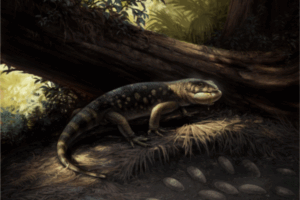Hunting an underground epidemic
April 3, 2024
Above: The research team outside Toquerville, UT. Left to right: Kimberly Hanson; Kevin Perry; Alyssa McCoy; Katrina Derieg; and Schuyler Liphardt.
In 2001, 10 archaeologists working at a dig site in northeastern Utah suddenly fell ill with a respiratory illness that sent eight of them to the hospital, coughing and feverish.
The symptoms resembled pneumonia, but their diagnosis was unexpected. It was Valley fever, a fungal infection that spreads to people through spores in the soil and dust—and it wasn’t supposed to be there. Valley fever is more common in hotter, drier states; previous predictions of where the fungus could survive in the soil barely extended into the southwest corner of Utah. The archaeologists’ dig site, in Dinosaur National Monument, was hundreds of miles outside the disease’s expected borders.
The truth is, nobody really knows which areas of the state harbor Valley fever. But the archaeologists’ plight shows that its fungal culprit could be far more widespread than anyone predicted. And as the climate changes, the fungus will likely spread further, explained Katharine Walter, assistant professor of epidemiology at the Spencer Fox Eccles School of Medicine at the University of Utah.

PHOTO CREDIT: KATRINA DERIEG
Eric Rickart in the field outside Santa Clara, UT.
“There have been incredibly intense recent changes in temperature as well as precipitation and drought here in the American West. These all impact the range of where the fungus can exist,” said Walter.
Walter is on a mission to map where in Utah the Valley fever fungus can survive and predict how it will move across the landscape as the climate changes. Walter and her collaborators—Katrina Derieg, vertebrate collections manager at the Natural History Museum of Utah; Eric Rickart, adjunct associate professor of biology at the U and curator of vertebrates at NHMU; and Kevin Perry, professor of atmospheric sciences in the U’s College of Mines and Earth Sciences—recently received a $375,000 Climate and Health Interdisciplinary Award through the Burroughs Wellcome Fund to power their fungus hunt and raise awareness of what to do for the people most at risk of infection.
Read the full story by University of Utah Health's Sophia Friesen in @TheU. You can read another article about this story at KSL.





